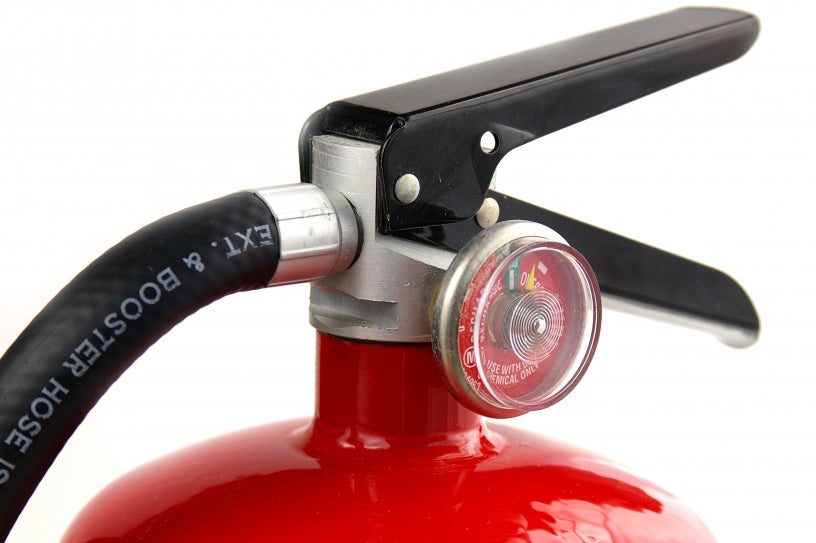Fire Extinguishers
 A portable fire extinguisher can save lives and property by putting out or containing a small fire. But because fire grows and spreads so rapidly, the number one priority in a fire at home or at work is to get out safely.
A portable fire extinguisher can save lives and property by putting out or containing a small fire. But because fire grows and spreads so rapidly, the number one priority in a fire at home or at work is to get out safely.
Use a portable fire extinguisher when the fire is confined to a small area, and is not growing; everyone has left the building; the fire department has been called and the room is not filled with smoke.
For the home, select a multi-purpose extinguisher that is large enough to put out a small fire, but not so heavy as to be difficult to handle. Fire extinguishers are labeled with standard symbols identifying the types of fire for which they are effective.
- Class A fires involve wood, cloth, paper, rubber, plastic and ordinary combustibles.
- Class B fires involve flammable liquids, like gasoline, oil, paint and oil-based products.
- Class C fires involve electrical equipment like wiring, circuit breakers and appliances
- Class D fires involve combustible metals, such as sodium or magnesium.
- Class K fires involve cooking oil and grease in commercial kitchens.
Read the instructions and become familiar with the operation of the extinguisher before you need to use it. To operate a fire extinguisher, remember the word PASS:
- Pull the pin. Hold the extinguisher with the nozzle pointing away from you, and release the locking mechanism.
- Aim low. Point the extinguisher at the base of the fire.
- Squeeze the lever slowly and evenly.
- Sweep the nozzle from side-to-side
Install fire extinguishers close to an exit and keep your back to a clear exit when you use the extinguisher so you can make an easy escape if the fire cannot be controlled. If the room fills with smoke, leave immediately.
For the San Diego Community Risk Reduction Division policy on fire extinguishers in buildings where they are required, see FPB Policy E-09-8 (Fire Extinguishers).
Fire extinguishers are one part of a fire response plan, but the primary element is safe escape. Every household should have a home fire escape plan and working smoke alarms.

